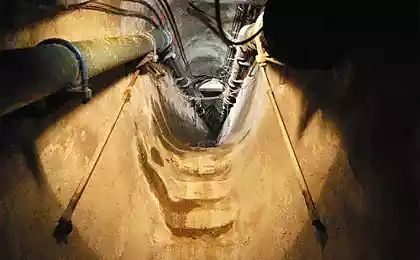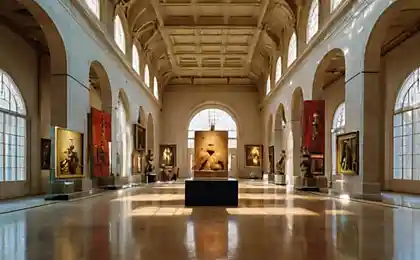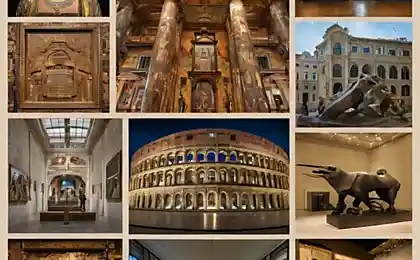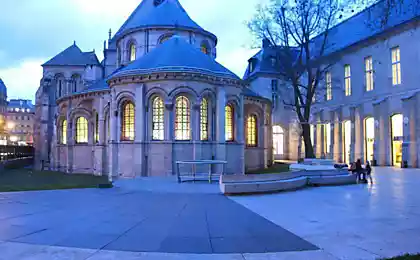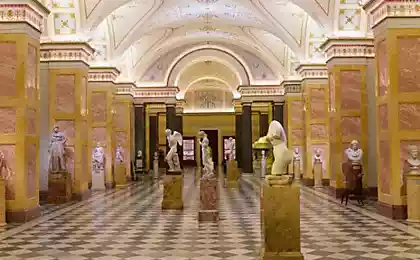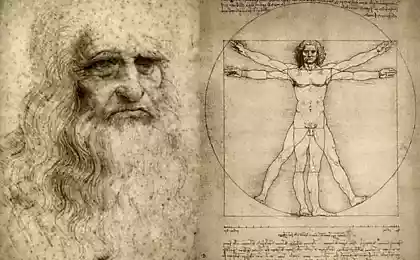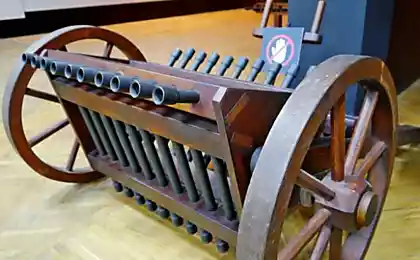722
Technical Museum. da Vinci
Finishing the story about Milan, I want to talk a little bit about there the Technical Museum. L. da Vinci. At first, I had plans to do this in detail, but on reflection, I realized that if I start to show it in as much detail as the Nuremberg w / e the museum a year ago, the fuse at Genoa, with its maritime museum is not enough. So did sort of summary - hodgepodge. Here heap everything - bayans and submarines, airplanes and locomotives, cars and cash registers.
* * *
The very same museum is interesting primarily because it is a sort of hymn to concentrate Italian industrial design and engineering - in various fields, but mostly during the last half century. Examining its halls and hangars, begin to gradually realize why all sorts of Ferrari-Lamborghini came from here, from these places. Well, I mean, I want to say that the strengths of the historic Italian technical tradition - this is design. Sometimes they even go out so that the sacrifice of style and design brings the fighting qualities, the price of production, or the stability of the product to a hostile environment. But, such is their mentality - there is, and the strengths and weaknesses, as well as other nations.
However, let's hike and see.
He writes: periskop
28 photos and text
Milan. The museum L. da Vinci. Hall of radio and audio
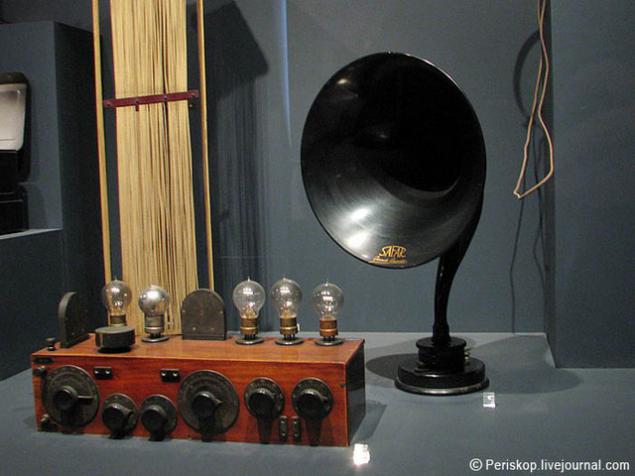
2. To get to the museum, you need to go to the subway S.Ambrogio, but already there is about 5 minutes walk - and we have in place. Here is the area with the Church: the museum occupies a large block on the left of the frame, and of the entrance to the building, respectively, also on the left.
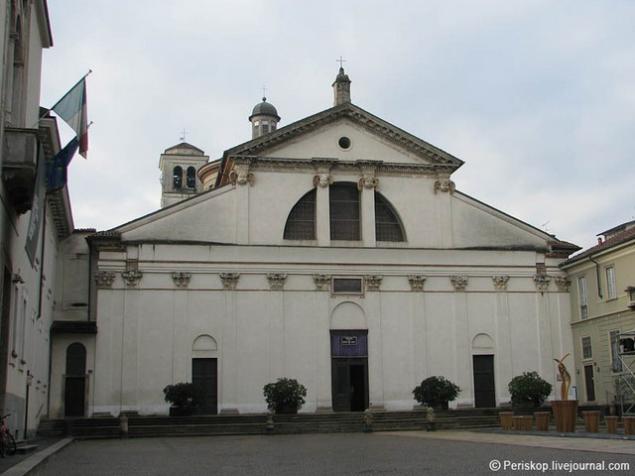
3. Here's what a 2nd (main) floor of the main building of the museum. Left exposed model and the ideas of Leonardo da Vinci, with detailed explanations, and full-scale exhibits of their motives - from the wings to the devices in mining. In general, it's a whole big topic, here I dwell on it will not. From this long longitudinal side of the hall depart smaller, thematic - printing, musical instruments, clocks, radio, trade, etc. It is necessary to watch the pictures do not give the impression.

4. Hall of radio and audio equipment. If there was better lighting, I would have took off more. But the Italians let loose there is the mysterious atmosphere of gloom, therefore, especially not to shoot. The title picture post - also from this room.

5. Trade Hall. Cash register early XX century.
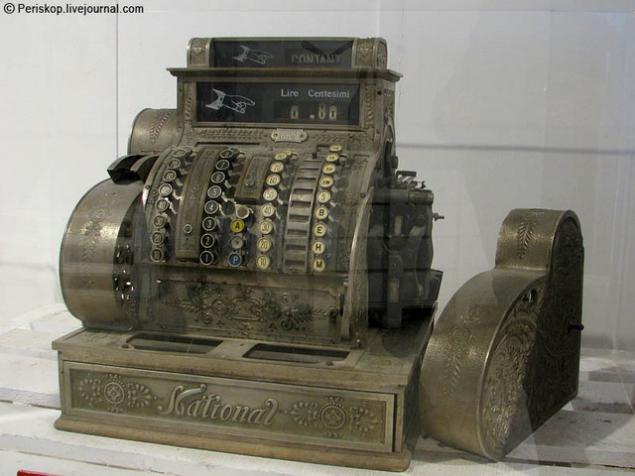
6. Hall of music and musical instruments. Italian accordion :-)

7. Type of housing down to the courtyard of the museum.

8. In addition to the main building with three tiers of halls, inside the quarter there are two hangar - a smaller train (see. Photo) and a large, sea-Jets (side wall on the left).

9. Let's first sail into the cool w / d hangar.

10. The Italian "crocodile" the beginning of XX century (or perhaps 1920 - the model is not specified).
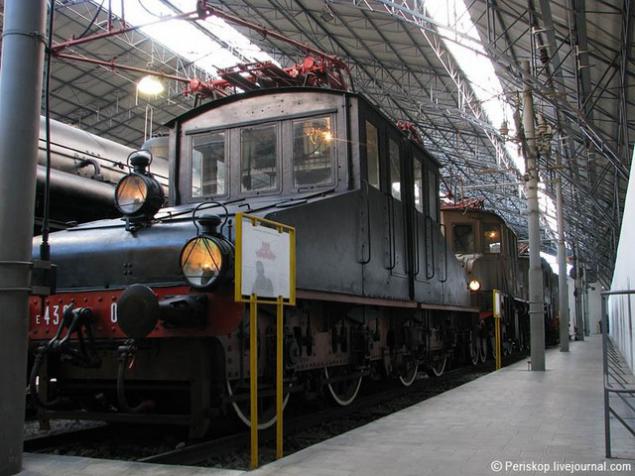
11. In the hangar, along with cars and locomotives are presented as signaling devices railways.
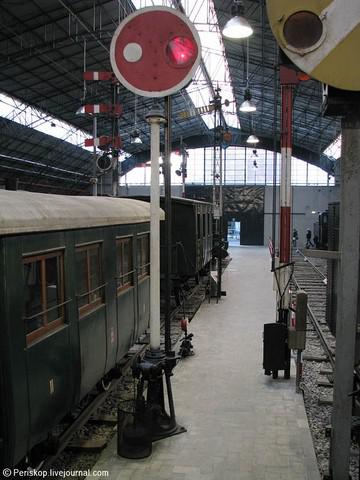
12. View of the entrance to the hangar.
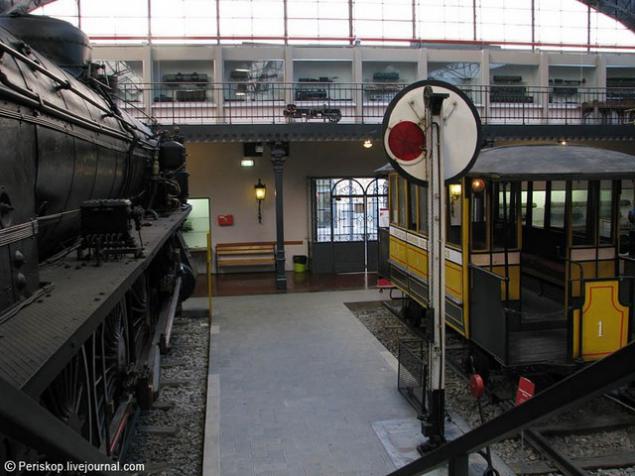
13. Locomotive classics of the 1920s. - Gr.746. Formula 1-4-1, 94 tons, maximum speed of 100 km / h cruising - 75.

14. View wheeled leading group.
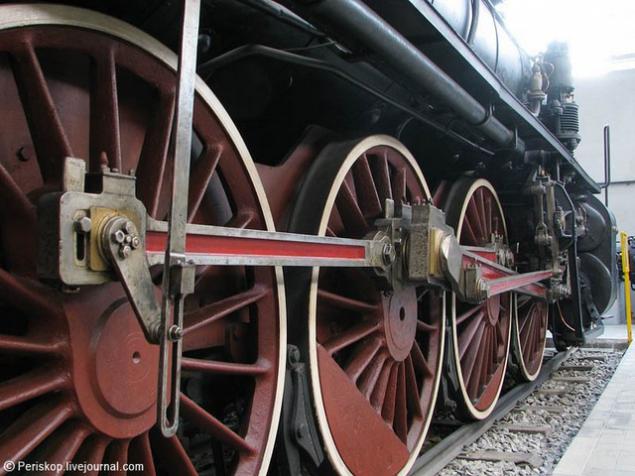
15. Cabin Design (on the boiler).
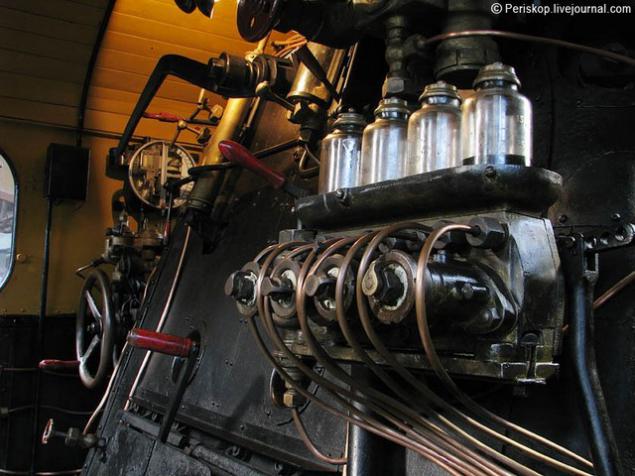
16. The stamp manufacturer.
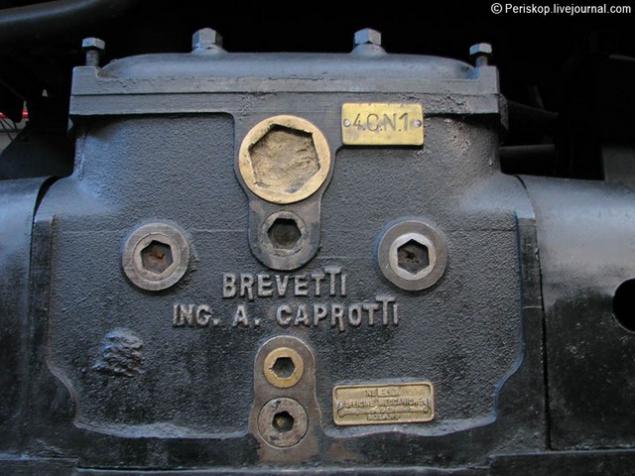
17. This view inside the hangar, with the car of the late XIX century, I already showed you.
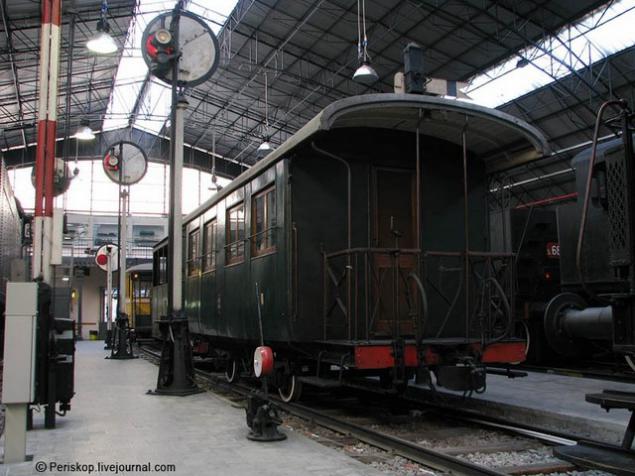
And now from the w / d move on to a large hangar, the aircraft-Marine. He is warm, in contrast to the first.
18. It is arranged in two levels on the ground are represented mainly by marine exhibits, and on top - aviation. About a quarter of the hangar takes a large model of the superstructure of the ship the second half of the XX century (pictured), with internal content - cabin, cabin, radio room, galley, etc. Unfortunately, in the day of the visit it was closed for some reason, so I'm inside her, alas, I did not get.

19. In the other half of the hangar put sailboat (or a life-size model - I'm not exactly understood). You can walk around and view the details of the rigging, deck superstructures.
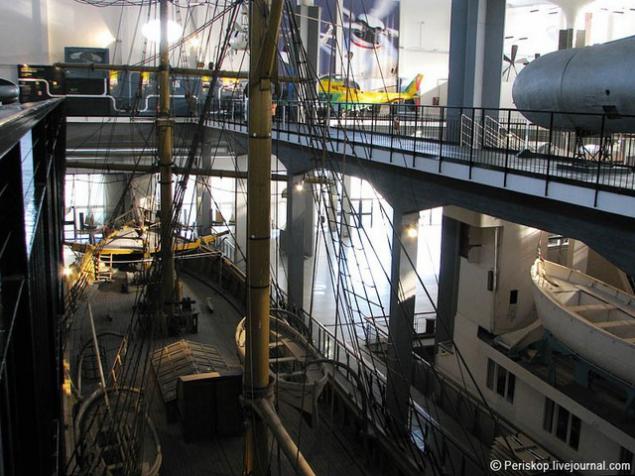
20. On the second floor are arranged planes, more than half of which - 20-50-ies. XX century.

21. Here, for example - fighter Regia Aeronautica Macchi MC-205 V (1942 - 1944.). And these war planes, after the fall of Mussolini, the two sides - against each other.
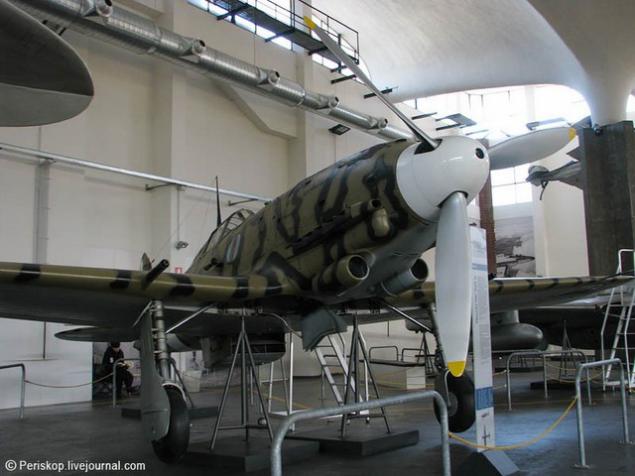
22. The fuselage jet Campini Caproni (the museum dates back to 1936 year) - the prototype of Italian jet aircraft.
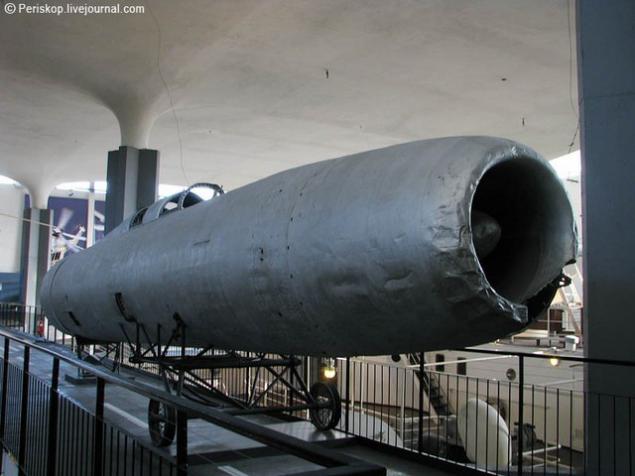
23. Around the hangar also exhibited samples of air, but more modern than the inside.
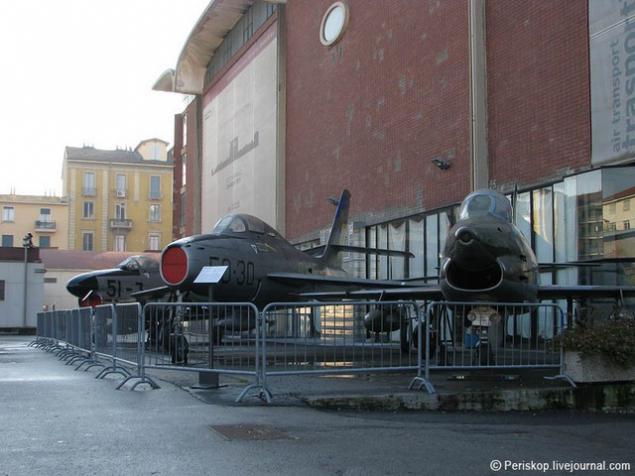
24. And for the w / e rises submarine hangar. This is a fairly modern marina military series ("Enrico Toti"), built in 1968. A relatively small - with a displacement of 595 tons. To retire in 1992, after the end of the Cold War. Then purified and delivered with great hemorrhoids here - from HMB Augusta through Cremona, then a month went by land to Milan - April-May 2001 After reading it epic, I was amazed that stubborn Italians dragged her name here, not put anywhere Type in the port of Trieste and Bari.

25. Here is a photo of Augusta, when it raised for the museum. 2001

26. Deck SP.
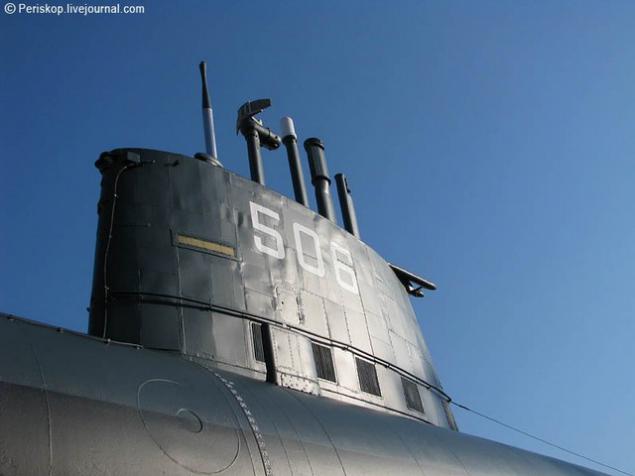
27. And the view from the stern, with screws.

28. Yakorёk boats. Photo from the bright sun turned with a certain touch of conceptual :-)
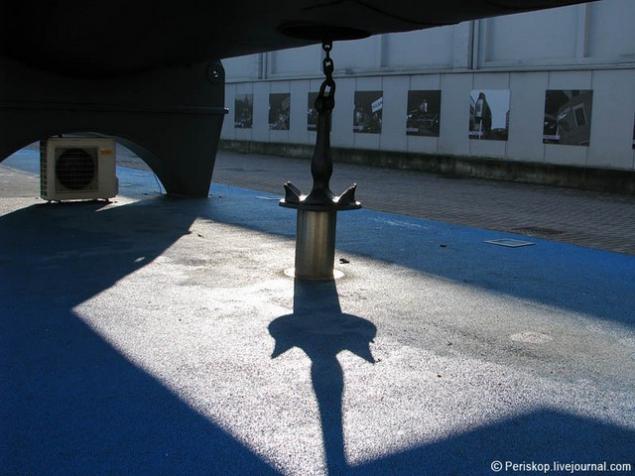
Source:
* * *
The very same museum is interesting primarily because it is a sort of hymn to concentrate Italian industrial design and engineering - in various fields, but mostly during the last half century. Examining its halls and hangars, begin to gradually realize why all sorts of Ferrari-Lamborghini came from here, from these places. Well, I mean, I want to say that the strengths of the historic Italian technical tradition - this is design. Sometimes they even go out so that the sacrifice of style and design brings the fighting qualities, the price of production, or the stability of the product to a hostile environment. But, such is their mentality - there is, and the strengths and weaknesses, as well as other nations.
However, let's hike and see.
He writes: periskop
28 photos and text
Milan. The museum L. da Vinci. Hall of radio and audio

2. To get to the museum, you need to go to the subway S.Ambrogio, but already there is about 5 minutes walk - and we have in place. Here is the area with the Church: the museum occupies a large block on the left of the frame, and of the entrance to the building, respectively, also on the left.

3. Here's what a 2nd (main) floor of the main building of the museum. Left exposed model and the ideas of Leonardo da Vinci, with detailed explanations, and full-scale exhibits of their motives - from the wings to the devices in mining. In general, it's a whole big topic, here I dwell on it will not. From this long longitudinal side of the hall depart smaller, thematic - printing, musical instruments, clocks, radio, trade, etc. It is necessary to watch the pictures do not give the impression.

4. Hall of radio and audio equipment. If there was better lighting, I would have took off more. But the Italians let loose there is the mysterious atmosphere of gloom, therefore, especially not to shoot. The title picture post - also from this room.

5. Trade Hall. Cash register early XX century.

6. Hall of music and musical instruments. Italian accordion :-)

7. Type of housing down to the courtyard of the museum.

8. In addition to the main building with three tiers of halls, inside the quarter there are two hangar - a smaller train (see. Photo) and a large, sea-Jets (side wall on the left).

9. Let's first sail into the cool w / d hangar.

10. The Italian "crocodile" the beginning of XX century (or perhaps 1920 - the model is not specified).

11. In the hangar, along with cars and locomotives are presented as signaling devices railways.

12. View of the entrance to the hangar.

13. Locomotive classics of the 1920s. - Gr.746. Formula 1-4-1, 94 tons, maximum speed of 100 km / h cruising - 75.

14. View wheeled leading group.

15. Cabin Design (on the boiler).

16. The stamp manufacturer.

17. This view inside the hangar, with the car of the late XIX century, I already showed you.

And now from the w / d move on to a large hangar, the aircraft-Marine. He is warm, in contrast to the first.
18. It is arranged in two levels on the ground are represented mainly by marine exhibits, and on top - aviation. About a quarter of the hangar takes a large model of the superstructure of the ship the second half of the XX century (pictured), with internal content - cabin, cabin, radio room, galley, etc. Unfortunately, in the day of the visit it was closed for some reason, so I'm inside her, alas, I did not get.

19. In the other half of the hangar put sailboat (or a life-size model - I'm not exactly understood). You can walk around and view the details of the rigging, deck superstructures.

20. On the second floor are arranged planes, more than half of which - 20-50-ies. XX century.

21. Here, for example - fighter Regia Aeronautica Macchi MC-205 V (1942 - 1944.). And these war planes, after the fall of Mussolini, the two sides - against each other.

22. The fuselage jet Campini Caproni (the museum dates back to 1936 year) - the prototype of Italian jet aircraft.

23. Around the hangar also exhibited samples of air, but more modern than the inside.

24. And for the w / e rises submarine hangar. This is a fairly modern marina military series ("Enrico Toti"), built in 1968. A relatively small - with a displacement of 595 tons. To retire in 1992, after the end of the Cold War. Then purified and delivered with great hemorrhoids here - from HMB Augusta through Cremona, then a month went by land to Milan - April-May 2001 After reading it epic, I was amazed that stubborn Italians dragged her name here, not put anywhere Type in the port of Trieste and Bari.

25. Here is a photo of Augusta, when it raised for the museum. 2001

26. Deck SP.

27. And the view from the stern, with screws.

28. Yakorёk boats. Photo from the bright sun turned with a certain touch of conceptual :-)

Source:



